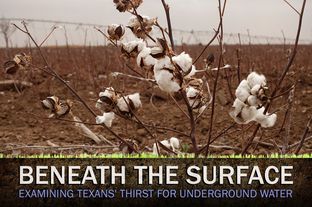The Texas Commission on Environmental Quality (TCEQ) will conduct
hearings to receive comments from the public on actions the commission
should take to protect the Edwards Aquifer from pollution, as required
under Texas Water Code, §26.046. This requirement assists the commission in its
shared responsibility with local governments such as cities and groundwater
conservation districts to protect the water quality of the
aquifer. Annual hearings are held on the Edwards Aquifer Protection Program
and the TCEQ rules, 30 Texas Administrative Code (TAC) Chapter 213, which
regulate development over the delineated contributing, recharge, and transition
zones of the Edwards Aquifer.
The hearings will be held at the following times and locations:
·
Tuesday, December
3, 2013 at 6:30 p.m. at the TCEQ Park 35 Office Complex, 12100 Park 35
Circle, Building E, Room 201S, Austin;
·
Wednesday, December
4, 2013 at 9:30 a.m. at the Tesoro Building, Alamo Area Council of
Governments, Al J. Notzon III Board Room, 8700 Tesoro Drive, Suite 100, San Antonio.
These hearings will be structured for
the receipt of oral or written comments by interested persons. Individuals may
present oral statements when called upon. There will be no open discussion
during the hearing; however, agency staff members will be available to answer
questions 30 minutes prior to and 30 minutes after the conclusion of the
hearing. Registration will begin 30 minutes prior to the hearing.
I will be at the Wednesday hearing in San Antonio and our Austin
groups will be representing GEAA at the Tuesday hearing. We invite you to join us and to go on
the record in support of better rules to protect the
Aquifer.
GEAA has been submitting the same comments since 2005 (read
these comments here) and, we
will be submitting these comments again this year as we are not aware of any
significant action or reforms from
TCEQ.
Written comments should
reference the Edwards Aquifer Protection Program and may be sent to Beth
Banks, Texas Commission on Environmental Quality, Field Operation Support
Division, MC 174, P.O. Box 13087, Austin, Texas 78711-3087, faxed to (512)
239-2249, or e-mailed to beth.banks@tceq.texas.gov. Comments must be received by 5:00 p.m.,
January 10, 2014. For further information or questions concerning these
hearings, please contact Ms. Banks at (512) 239-3241, or visit http://www.tceq.texas.gov/compliance/field_ops/eapp/history.html.
Communications to TCEQ in support of GEAA’s recommendations are most
welcome. You can send us a copy for
our records (and edification!) to annalisa@aquiferalliance.org.
To all, a happy Thanksgiving.
I know that I am very thankful to each and every one of you for your
support!
Sincerely,
Annalisa
Peace
Executive
Director



